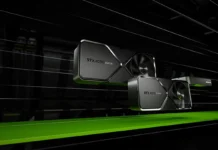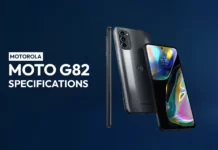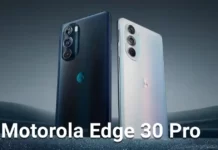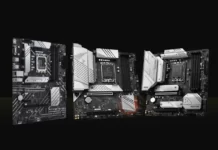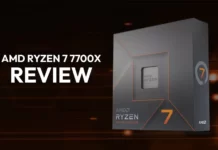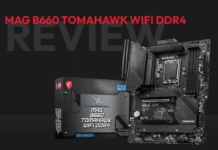The MSI MAG B660M Mortar is an inexpensive Micro ATX option for those who want to get into Alder Lake-based system for less than Z690 cost. It is full-featured for a Micro-ATX motherboard, with two M.2 sockets, Wi-Fi 6, and a better incomplete presentation. MSI MAG B660M Mortar DDR4 is one of the best Intel B660 motherboards.
After months of contributing just the flagship Z690 chipset motherboards for its 12th Generation Alder Lake CPUs, Intel has taken the censorship of three lesser alternatives for its updated CPUs: H670, B660, and H610. All three chipsets call from the conventional and fund side of the tracks to make a purchase on the platform particularly less expensive than Z690.
However, there are a few dissimilarities between these new chipsets and the changeable causes. In this case, the question arises why they are less expensive? Z690 permits overclocking of the CPU, but these chipsets or boards do not allow overclocking. Moreover, memory overclocking is possible across Z690, H670, and the B660 chipsets. In the end, Intel planned the chipsets to carry numerous bells and whistles; you will find the more expensive Z690-based alternatives to you at an inferior price point.
Although it is a budget motherboard, you still get PCIe 5.0 support from the Alder Lake processor across all 600-series chipsets. Still, not all board partners incorporate that support on their boards. Z690 and H670 add one or two PCIe 5.0 extension slots, whereas B660 and H610
are limited to one PCIe 5.0 slot. Yet again, that relies on whether a board partner chooses to implement it–MSI does not work for this board. Another dissimilarity adds to the DMI interface connection. On B660, it is limited to x4 DMI 4.0, whereas Z690 and H670 have the full x8 DMI 4.0. This lessening in bandwidth confines connectivity preferences on H610 and B660 motherboards. The motherboard features will clarify confusion between the 600 series chipsets and others.
| Z690 | H670 | B660 | H610 | |
|---|---|---|---|---|
| Memory | DDR5 / DDR4 | DDR5 / DDR4 | DDR5 / DDR4 | DDR5 / DDR4 |
| CPU OC | Y | N | N | N |
| MEM OC | Y | Y | Y | N |
| CPU PCIe 5.0 | 1×16 / 2×8 | 1×16 / 2×8 | 1×16 | 1×16 |
| CPU PCIe 4.0 | 1×4 | 1×4 | 1×4 | – |
| DMI 4.0 Lanes | 8 | 8 | 4 | 4 |
| PCIe 4.0 | 12 | 12 | 6 | 0 |
| PCIe 3.0 | 16 | 12 | 8 | 8 |
| USB 3 (20G) | 4 | 2 | 2 | 0 |
| USB 3 (10G) | 10 | 4 | 4 | 2 |
| USB 3 (5G) | 10 | 8 | 6 | 4 |
| USB 2.0 | 14 | 14 | 12 | 10 |
| SATA 3.0 | 8 | 8 | 4 | 4 |
You are losing a bit of everything compared to Z690, from USB ports to M.2 and SATA. Still, for several users who did not require four M.2 sockets and won overclock the processor, the least entry price into the Alder Lake policy will support its users just like a breath of fresh air.
MSI registered seven B660 boards for the US market across the Tomahawk, Mortar, and Pro lines that add DDR4- and DDR5-based alternatives. The cost is $199.99 for the Tomahawk WIFI (DDR5) down to the PRO B660M-A WIFI (DDR4) at $149; both are at a competitive price over most Z690 alternatives. Today we are looking at the MAG B660M Mortar WIFI DDR4.
The Micro ATX-size B660M Mortar WIFI DDR4 adds the whole thing most users need in a smaller enclosure at a cheaper cost. Configuration adds two M.2 sockets, six SATA ports, a 20 Gbps USB Type-C port, proficient power delivery, high-quality audio, etc. All B660 motherboards use a PCIe 4.0 x16 slot for the graphics card. If you want PCIe 5.0 support on these MSI boards, you will have to move to the H670 Tomahawk WIFI DDR4. Even though I would like to see PCIe 5.0 on the visual side, the truth is that it is not required and will not be for
at slightest another couple of generations.
As for performance, the B660M Mortar DDR4 has been done overall, mixing it up with the other DDR4 boards we have experienced lately. It was slower in the Procyon Office suite, but otherwise just as performance as the rest. Gaming results were also spot on. At last, there is
nothing out of the usual, nothing slower or faster than the rest. It ran our DDR4 3600 and DDR4 4000 sticks by allowing XMP, and no supplementary alteration was mandatory. The Mortar was proficient in taking everything out of the processor during stock settings in our study.
You will get a slide of accessories hidden below a cardboard screen following the board out of the box. The accessory stack adds all of the fundamentals to find you going and comprises a driver disk, user manual, M.2 quick latch, and more. We observed that the Wi-Fi antennas were missing from our sample, but they should be in the box when on store shelves. There is a list of everything MSI adds to the board.
- (2) SATA 6Gb/s cables
- Wi-Fi antenna
- (2) M.2 Quick latch
- Screwdriver(s)
- User Manual
- Quick Install Guide
- Driver DVD
- Stickers

The Micro ATX B660M Mortar WIFI DDR4 pursues the military theme of several MSI budget models. The DDR4 version uses a black 6-layer PCB without any model or outlines. The huge silver heat sinks give a contrast against the board, along with MSI, MAG, and Mortar branding
in black. It is a simple glance that doesn’t acquire interest on its own. It will not win any beauty contests but does not seem low-priced, either. If you plan to use RGB illumination, you will have to buy some individually and link through the onboard headers.
If we look from the top half of the board, on the left side, we find a lock look at the large VRM heat sinks that enclosed the socket. There is sufficient surface area and gathering here, which keeps the power supply bits cool. Sitting between the heat sinks are two 8-pin EPS connectors to power the processor.

Off to the right of the opening are four unreinforced, single-side locking DRAM slots. In the DDR4 edition, we work with the favor of up to 128GB with speeds planned up to 4800+ (OC) MHz. This is not the maximum value we have observed listed for DDR4, but if you are trying to drive memory overclocks, you have to look upon Z690 mainly because its ITX boards are designed for overclocking. The first RGB title is on the left, between the top VRM heat sink. In this area, it is a 3-pin title supporting ARGB strips. You have to search for a second 3-pin ARGB and one 4-pin RGB on the lower side of the board. The motherboard manages any attached RGBs via Mystic Light software in MSI’s Dragon Center.
The first two 4-pin fan headers are CPU and PUMP on the upper-right edge. We do not have operating information that how far as output goes, so this information exists in the manual; suppose each supports 1A/12W, and you do not want any damage from drawing too much
power. All headers support PWM and DC-type fans with control knobbed through the BIOS or Dragon software.
When we move toward the right corner, we run into the four MSI Q-LEDs that light up via the POST process. The equivalent light remains lit if your boot hangs in one of the four areas like CPU, RAM, Boot, or VGA. All the things are telling you usually, where is the actual problem.
At the bottom is the 24-pin ATX connector that supplies power to the board. Another one is a front panel USB 3.2 Gen2 Type-C port, and under that is a front-panel USB 3.2 Gen1 header.
The Mortar WIFI DDR4 (and DDR5) uses a 14-phase VRM with 12 phases devoted to V-core. Power is sent from the EPS connectors to a Renesas RAA229132 regulator, then on to the 60A Renesas ISL99360 SPS MOSFETs. The 720A accessible is not a lot. But it still let our i9-
12900K gets to its highest potential at stock. When we move, the next to comes up is the audio section. We spot the Realtek ALC1200 codec in all its magnificence and not hidden below a Faraday cage. Adjacent to the chip is numerous unbranded yellow audio capacitors and the line untying the audio bits from the rest of the board. The best thing is that MSI used the finest audio codec, even if it is not the most recent generation. An overpowering greater part of users will discover this audio execution sufficient for their requirements.
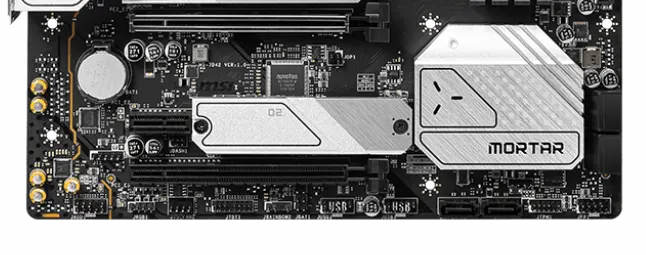
There are three PCIe gaps in the middle of the board and two M.2 openings that use MSI’s M.2 Shields Frozr heat sinks. We start with PCIe; the apex slot runs PCIe 4.0 x16 rapidity from the CPU and is proposed as the primary graphics card slot. The second full-length slot is PCIe 3.0 x4, with a closed-end PCIe 3.0 x1 slot just on top of it. MSI reports AMD Crossfire support if you are still in a multi-GPU arrangement.
One of the disadvantages of a smaller board is the general lack of real estate. Most of the large boards of this generation have up to five M.2 sockets, but the MicroATX Mortar has two sockets scattered between the PCIe slots. Both support up to 80mm PCIe 4.0 x4 constraints. The
the complete specification is not available, as we said earlier, but we imagine one slot to run SATA-based M.2 modules and PCIe.
In this motherboard, you will get four SATA ports along the right corner of the board and two more within the bottom edge. The SATA ports maintain RAID0/1/5/10 modes if you want extra speed or redundancy. Nothing should get immobilized as far as tracking distribution so that you can run the full complement of six SATA drives and two M.2 drives of your choice.
From corner to corner, the bottom perimeter of the motherboard is many headers and USB, SATA ports, and RGB. Here is the entire list, from left to right:
- Front panel audio
- 4-pin RGB header
- System Fan header
- Thunderbolt header
- 3-pin ARGB header
- (2) USB 2.0 headers
- (2) SATA ports
- TPM header
- Front panel header

The back IO area rises with a pre-installed IO plate whose silver color and black writing match the Mortar’s theme. Each port is marked and easy to read; even the writing is small for these forty-something eyes. There are eight USB ports here, adding seven Type-A and a 20 Gbps
Type-C port. Exhibit options add HDMI and Display Port ports. Next, you will find the Realtek 2.5 GbE port and the Intel Wi-Fi 6 transmitter connections. The last one is the five-plug plus SPDIF audio stack. You can see at least one more type-A port and maybe a reset button here, but that is not a deal-breaker.
MSI MAG B660M Mortar WIFI DDR4 Specifications
| Socket | LGA1700 |
| Chipset | B660 |
| Form Factor | mATX |
| Voltage Regulator | 14 Phase (12+1+1, 12 60A MOSFETs for Vcore) |
| Video Ports | (1) HDMI (v2.1) |
| (1) DisplayPort (v1.4) | |
| USB Ports | (1) USB 3.2 Gen 2×2 Type-C port (20 Gbps) |
| (3) USB 3.2 Gen 2 (10 Gbps) | |
| (4) USB 2.0 (480 Mbps) | |
| Network Jacks | (1) 2.5 GbE |
| Audio Jacks | (5) Analog + SPDIF |
| Legacy Ports/Jacks | ✗ |
| PCIe x16 | (1) v. 4.0 (x16) |
| (1) v. 3.0 (x4) | |
| PCIe x8 | ✗ |
| PCIe x4 | ✗ |
| PCIe x1 | (1) v. 3.0 (x1) |
| CrossFire/SLI | Supports AMD Crossfire Technology |
| DIMM slots | (4) DDR4 4800+(OC), 128GB Capacity |
| M.2 slots | (1) PCIe 4.0 x4 (64 Gbps) / PCIe (up to 80mm) |
| (1) PCIe 4.0 x4 (64 Gbps) / PCIe + SATA (up to 80mm) | |
| U.2 Ports | ✗ |
| SATA Ports | (6) SATA3 6 Gbps (Supports RAID 0/1/5/10) |
| USB Headers | (1) USB v3.2 Gen 2×2, Type-C (10 Gbps) |
| (1) USB v3.2 Gen 1 (5 Gbps) | |
| (2) USB v2.0 (480 Mbps) | |
| Fan/Pump Headers | (4) 4-Pin (CPU, Pump, System fans) |
| RGB Headers | (2) aRGB Gen2 (3-pin) |
| (1) RGB (4-pin) | |
| Diagnostics Panel | Q-LEDs |
| Internal Button/Switch | ✗ |
| SATA Controllers | ✗ |
| Ethernet Controller(s) | (1) Realtek RTL8125 (2.5 Gbps) |
| Wi-Fi / Bluetooth | Intel AX201 Wi-Fi 6 (2×2 ax, MU-MIMO, 2.4/5/6 GHz, 160 MHz, BT 5.2) |
| USB Controllers | Genesys Logic GL3590 |
| HD Audio Codec | Realtek ALC1200 |
| DDL/DTS Connect | ✗ / ✗ |
| Warranty | 3 Years |
Final Verdict about MSI MAG B660M Mortar WIFI DDR4
If you are planning to buy a b660 motherboard for under $200, at a price point of $189.99, the MSI MAG B660M Mortar is an affordable Micro ATX choice for those who want to get into Alder Lake-based system for less than Z690 pricing. It is a full-featured Micro-ATX motherboard, with two M.2 sockets, Wi-Fi 6, and good overall performance.
Reasons to buy
- Price
- Good performance
- Six SATA ports
Reasons to avoid
- Minor performance loss with DDR4
- Just two M.2 sockets
You can check the best Intel b660 motherboard
Check out more:
- Top 5 best wireless gaming keyboards in 2022
- Top 5 gaming laptops in 2022
- Top 5 PC Cabinets in 2022
- Top 5 PCIe 4.0 SSD for gaming in 2022
- Top 5 AMD Motherboards in 2022
- Best 5 gaming headsets in 2022
- Top 5 Gaming CPUs in 2022: First Quarter of 2022
- Top 5 Best gaming monitors in 2022
- Top 5 best power supplies for gaming in 2022
- Top 5 Best Graphics Cards for Gaming in 2022
- Top 5 best gaming PC in 2022
- Top 5 Best Intel B660 Motherboards in 2022
- Top 5 Best lightweight gaming mouse in 2022

